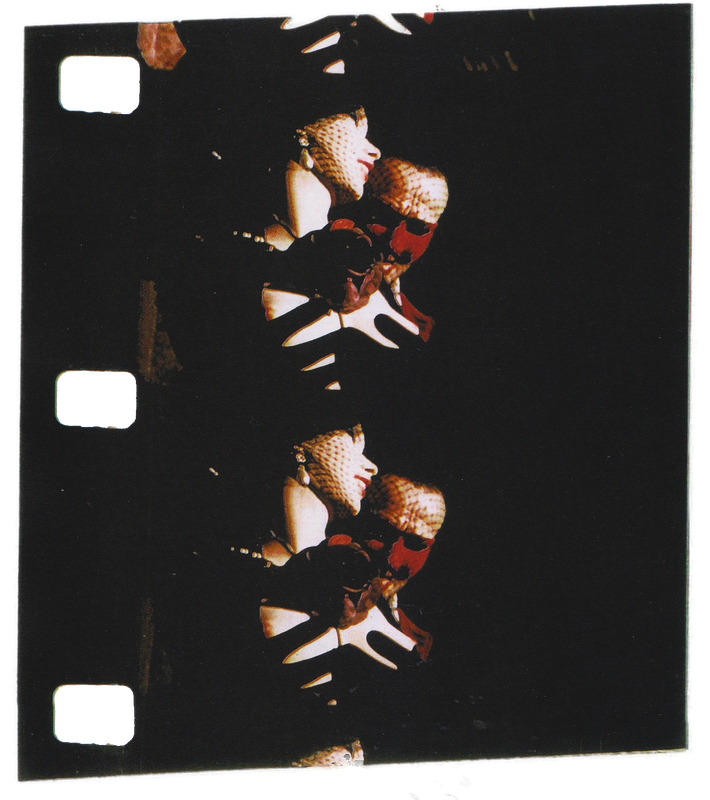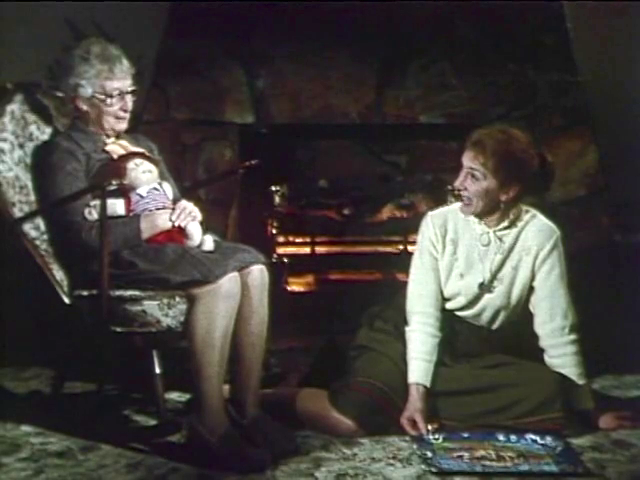“Shadow boxes become poetic theaters or settings wherein are metamorphosed the element of a childhood pastime.”Children's Party (Joseph Cornell, c. 1938/1969)
Dec
18
Las Posadas
.png)
Exuberant dancers at the children's party.
A festive child for Las Posadas
– Joseph Cornell
Children of all ages are entertained by a menagerie of dancers, acrobats, talented fauna and bobbing apples in this exhilarating found-footage party. Part of The Children's Trilogy, together with Cotillion (c. 1938/1969) and The Midnight Party (c. 1938/1969).
ExperimentalFilm
Report (Bruce Conner, 1967)
Nov
23
1963

Television footage of JFK's state funeral with the caption “November 23, 1963”, superimposed over it.
“Oh, it's you.” Mix-Up ou Meli-melo (Françoise Romand, 1986)
Nov
21
.png)
One of the daughters, here as a child, with one of their mothers. DP: Emile Navarro.
A heartfelt reunion scene*
– Margaret Wheeler, welcoming the viewers to this curious retelling of her life's events
Through an unexplained muddle, the Wheeler and the Rylatt girls were mixed up at the maternity ward. One of the mothers, Mrs Wheeler, had a hunch something was off. Her girl was suspiciously long and skinny, unlike the one that was entrusted to her. Over the years and to Mrs Rylatt's increasing chagrin, Mrs Wheeler kept in touch with that woman from the maternity ward. And was proven to be correct. This film is one breezy yet tense reunion scene. Heartwarming, awkward, and – like all that's nostalgia – slightly surreal.
* the Bales 2025 Film Challenge for November is, again, not date-based, but follows a sloppy schmaltzy all-American Thanksgiving-y narrative. Trying to make it work my way.
München-Berlin Wanderung [Walking from Munich to Berlin] (Oskar Fischinger, 1927)
Nov
20
.png)
A bunch of Buben take a moment to pose between troublemaking. DP: Oskar Fischinger.
A journey or road trip*
Four weeks in four minutes, spanning decades in its disruptive form.
* the Bales 2025 Film Challenge for November is, again, not date-based, but follows a sloppy schmaltzy all-American Thanksgiving-y narrative. Trying to make it work my way.
“Well, as I said before, I say again, here's… Here's to a son… to the house of Frankenstein.” Frank Stein (Iván Zulueta, 1972)
Oct
30
Karloff

The Monster (Karloff) in Zulueta's recut (via). DP: Iván Zulueta / Arthur Edeson + Paul Ivano.
A [favourite] Boris Karloff film*
– Baron Frankenstein
Zulueta's mycotoxic fever dream of Whale's Frankenstein.
* the Bales 2025 Film Challenge for October is horror-themed as opposed to date-based, and is all about favourites. Expect non-horror and films I believe to be relevant instead.
“A premonition of a horror film” Outer Space (Peter Tscherkassky, 1999)
Oct
26

Barbara Hershey as Carla Moran. DP of The Entity: Stephen H. Burum.
[Favourite] psychological horror*
– tagline
Real horror is not found in broken dinner plates or corpuscular masses of light. It's in what the mind does with that input, in how those lux morph into human-like shapes. In how gusts of wind becomes larynx-touched voices. Cut up the neatly filed research papers and be left with the whispers of the mind.
* the Bales 2025 Film Challenge for October is horror-themed as opposed to date-based, and is all about favourites. Expect non-horror and films I believe to be relevant instead.
狂った一頁 [Kurutta ichipėji / A Page of Madness] (Teinosuke Kinugasa, 1926)
Oct
14
silent cinema

A masked inmate (Eiko Minami) dances. The shot of the dancer is superimposed over a shot of her cel's bars, putting the viewer in the position of the husband witnessing – or is he hallucinating – an inescapable nightmare (via). DP: Kōhei Sugiyama.
A [favourite] silent horror film*
Incomplete and, despite the generally accepted popular Occidental opinion, not a horror film. Oh, to have seen this narrated by Musei Tokugawa…
* the Bales 2025 Film Challenge for October is horror-themed as opposed to date-based, and is all about favourites. Expect non-horror and films I believe to be relevant instead.
“Here lies
Pierre MOLINIER
born on 13 April 1900 died around 1950
he was a man without morals
he was proud of it and gloried in it
No need to pray for him.”Satan bouche un coin (Jean-Pierre Bouyxou + Raphaël Marongiu, 1968)
Oct
10

In an autoerotic display, Androgyne (Pierre Molinier) fondles a woman (Janine Delannoy) wearing one of his masks that echoes Molinier's deceased sister (via). DPs: Jean-Pierre Bouyxou, Raphaël Marongiu & Loïc Picard.
A [favourite] color [horror] film*
– Pierre Molinier, mock-epitaph (via, NSFW as goes without saying)
* the Bales 2025 Film Challenge for October is horror-themed as opposed to date-based, and is all about favourites. Expect non-horror and films I believe to be relevant instead.
KIPHO [Du musst zur KIPHO] (Julius Pinschewer, 1925)
Sep
25
1925

A very modern dressed woman with a small film camera. Superimposed but suggested she's filming it, a large teddybear – a bear is #Berlin's official mascot – to remind viewers that the Kino und Photoausstellung [“Film and Photo Fair”) takes place in the German capital. DP: Guido Seeber.
